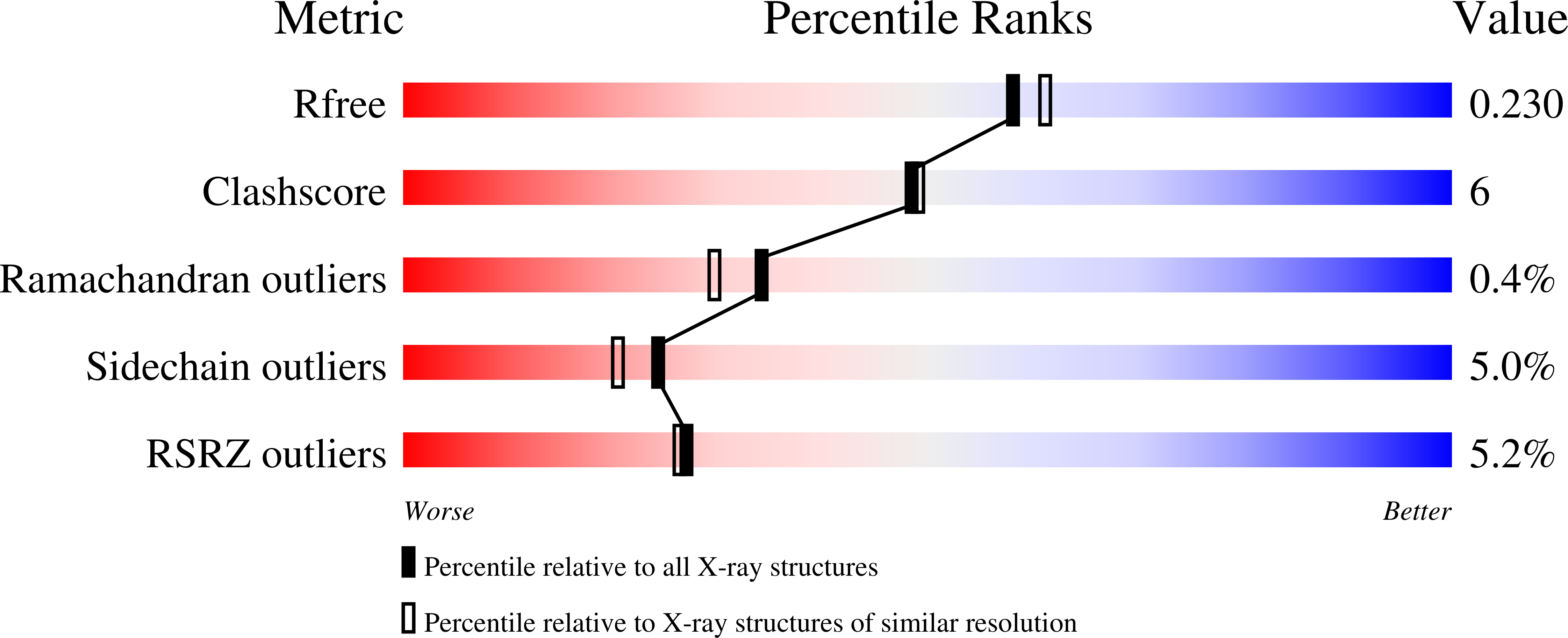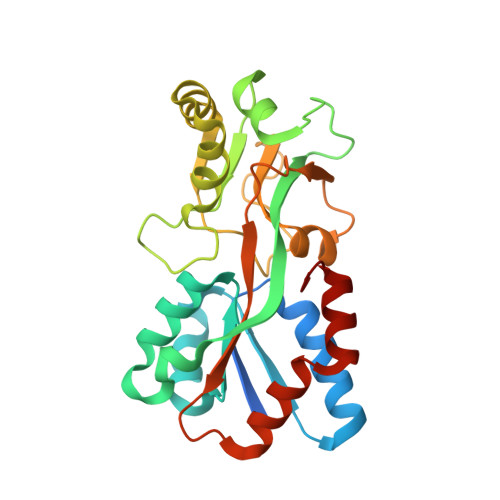Specificity of Campylobacter jejuni adhesin PEB3 for phosphates and structural differences among its ligand complexes.
Min, T., Vedadi, M., Watson, D.C., Wasney, G.A., Munger, C., Cygler, M., Matte, A., Young, N.M.(2009) Biochemistry 48: 3057-3067
- PubMed: 19236052
- DOI: https://doi.org/10.1021/bi802195d
- Primary Citation of Related Structures:
3FIR, 3FJ7, 3FJG, 3FJM - PubMed Abstract:
PEB3 is a glycoprotein adhesin from Campylobacter jejuni whose structure suggested a role in transport. We have investigated potential ligands for PEB3 and characterized their binding properties using biophysical methods in solution and by X-ray crystallography. A thermal aggregation assay of PEB3 with a library of physiological compounds identified three possible ligands [3-phosphoglycerate (3-PG), phosphoenolpyruvate (PEP), and aconitate], which stabilized wild-type PEB3 but did not stabilize either a PEB3 form containing two mutations at the ligand-binding site, T138A/S139A, or a second PEB3 mutant, K135E, at a site approximately 14 A away. Fluorescence titration experiments and cocrystal structures with various ligands were used to characterize the binding of 3-PG, PEP, and phosphate to PEB3. Further, a C. jejuni growth experiment in minimal medium supplemented with 3-PG showed that this molecule enhances the growth of wild-type C. jejuni, but not of the PEB3 mutants. Crystallographic analysis of PEB3 complexes revealed that the Ser171-Gln180 region in the presence of 3-PG or other phosphates is helical and similar to those of other transport proteins, but it is nonhelical when citrate is bound. The K135E mutation resulted in expression of a more highly glycosylated form of PEB3 in vivo, and its crystal structure showed the conformation of the first two residues of the glycan. On the basis of our findings, we suggest that PEB3 is a transport protein that may function in utilization of 3-PG or other phosphate-containing molecules from the host.
Organizational Affiliation:
Department of Biochemistry, McGill University, Montreal, QC, H3G 1Y6 Canada.
















